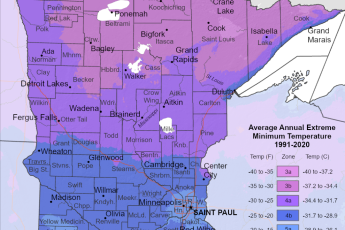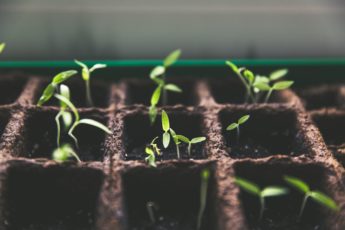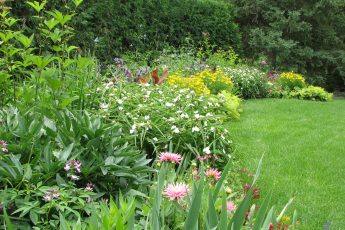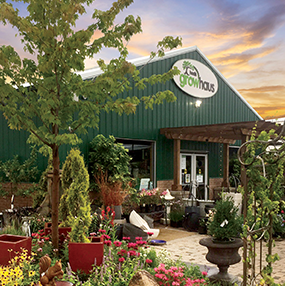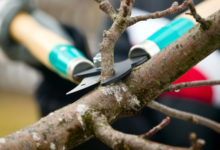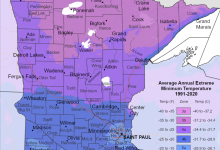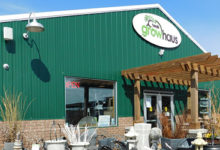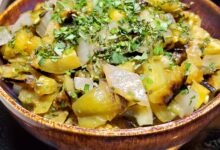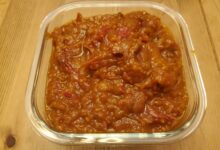Bee Lawns

Bees have an imperative role in our eco-system, pollinating a third of the world’s food supply as well as producing honey and beeswax. Food for thought, you can thank a bee for one out of every three bites of food you consume. With the increase of agriculture, urban turfgrass and exposure to pesticides, it is of no surprise many of our native bee populations are in decline.
Bees maintain plant species that many animals rely on as food sources and through pollination they contribute to genetic diversity. When it comes to building sustainable landscapes, bees are a cornerstone and vital to preserving the balance of our eco-system.
Explore the sustainable alternatives to high input, low output landscapes and consider a lawn that requires little input with high reward. A bee lawn provides beauty and function with little maintenance, supplying a nectar rich food source for honey and native bees.
What is a Bee Lawn
Bee lawns are a mixture of low growing fescue grasses and flowering perennials. Perennials commonly used are Dutch White Clover (Trifolium repens), Self-Heal (Prunella vulgaris), Creeping Thyme (Thymus serpyllum) and Ground Plum (Astragalus crassicapus). GrowHaus carries both Bee Lawn Seed and Dutch White Clover.
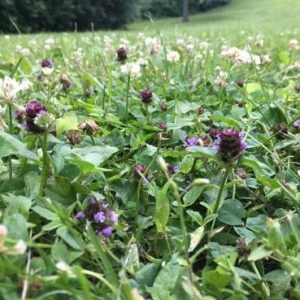
Where to Install a Bee Lawn
First determine if your site is suitable for a bee lawn. A low-use, low-visibility lawn is the ideal site whereas a high-use, high-visibility lawn is not ideal but, could incorporate a partial bee lawn. Sunlight is also an important factor, most bee lawns require partial to full sun and bees like warm temperatures when foraging. If your site is mostly shade, a bee lawn would not be the most successful option.
When to Install a Bee Lawn
Bee lawns are best installed in late fall when soil temperatures have dropped below 40 degrees to reduce competition from surrounding seeds. Another option is to overseed in the early spring however, competition with surrounding seeds at this time is greater.
How to Install a Bee Lawn
There are two methods to installing a bee lawn, overseeding and lawn renovation. Overseeding is spreading the bee lawn mix over your existing turfgrass and is the most efficient and economical. Renovation involves removing the existing turfgrass which reduces competition but, can be more costly and labor intensive.
A partial bee lawn installation is an easy way to start using either installation method.
How to Maintain a Bee Lawn
Remember low input, high reward? Because bee lawns consist of low growing fescues and perennials, you will have more free time not mowing your lawn. To encourage blooms, it is recommended to keep your lawn 2 to 2.5″ high, mowing only one to three times a month. Once established bee lawns require no fertilization and with White Dutch Clover in the mix, it feeds itself with nitrogen. Also, forget the sprinkler bee lawns do not require supplemental irrigation once established.
Visit the GrowHaus for bee lawn mix or the University of Minnesota website for additional information and resources.


